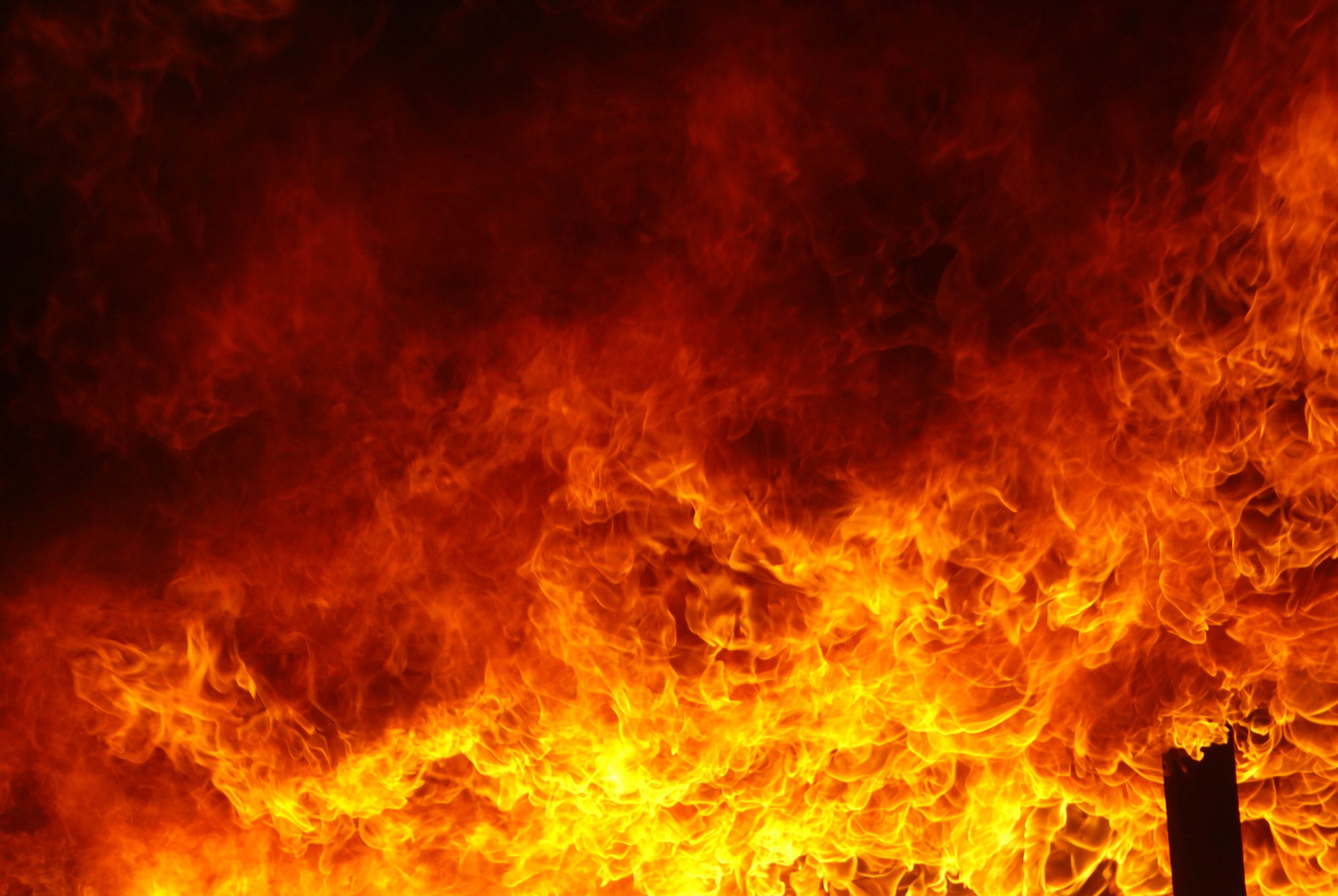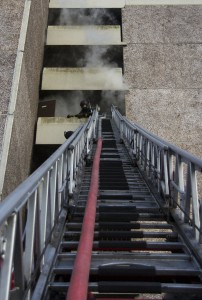The basic principle of fire ventilation is to actively and in a controlled way change the conditions in a burning building, with the intention of releasing heat or fire gases out of the building. But even a decision or action with the intention of not releasing heat or fire gases can be said to fall under the collective concept of fire ventilation. This is sometimes referred to as anti-ventilation. The working methods and the tactical design of the operation are affected by the objective of the fire and rescue operation and by the purpose of the measures that are intended to affect the flow of heat or fire gases within or out of the building. It is about being clear with what you want to achieve with fire ventilation, as part of the entire fire and rescue operation.
The overall objective of fire ventilation is to release heat or fire gases or otherwise change the conditions in a burning building so that this heat or fire gases flow in the way we want. In the vast majority of cases, this also means that air flows into the building, which can have significant consequences.
Different purposes can be achieved depending on the design and implementation of measures related to fire ventilation. We may use fire ventilation with the purpose to
- Reduce the impact of fire gases and heat on trapped persons, and to facilitate their evacuation from the building.
- Facilitate the fire and rescue operation by reducing the thermal load, and to improve visibility in the building for the fire fighting crew.
- Prevent or contain the spread of fire or fire gases through a reduction of the impact of pressure and heat in the building.
- Enable or facilitate salvage and overhaul at an early stage of the fire and rescue operation
Fans are sometimes used to for fire ventilation. The purpose of the fan can be, e.g. to push fire gases out of a room on fire, but it can also be to e.g. pressurize a staircase so that fire gases can´t spread to the staircase from a room on fire. The purpose of measures taken should always be clarified at every operation. If fans are used, then it should be clarified whether the purpose is to push fire gases out of the building (positive pressure ventilation) or whether it is to pressurize a space. Personnel involved in the operation must also be aware of what happens in the building when fire gases are vented out and air, often as a direct consequence, flows in.
Fire ventilation means that fire gases must be vented out, but also that fresh air will flow in (generally). This supply of air normally affects the fire in such a way that the rate of heat release from the fire increases or the fire spreads faster. Conversely, this of course also means that in some cases a fire can be limited by not performing fire ventilation. However, seen throughout an operation, fire ventilation rarely degrades the result of the operation, provided that the ventilation measure is controlled and coordinated with other measures, e.g. suppression. Fire ventilation can, however, make the situation worse locally, but at the same time making it possible to influence the fire in such a way that any problems can be dealt with. Other and more difficult problems will most likely arise if no fire ventilation is carried out. However, fire ventilation should be carried out in the right way, in the right place and at the right time and coordinated with other measures, especially suppression. There must be a plan how fire ventilation may be included as part of the operation.
During a fire, fire gases are always produced. There are five aspects to consider when it comes to properties of fire gases:
- Fire gases can have low or no transparancy, thus limiting our vision.
- Fire gases can be combustible, even if they are completely transparent.
- Fire gases are generally toxic and affect the body in both the short and the long term.
- Fire gases can be reactive and can then affect and destroy interiors, tools or other equipment.
- Fire gases may be hot.
The two factors that mainly control and influence how fire gases flows and spread inside and out of a building are
- thermal buoyancy – differences in density
- mass balance – the balance between what’s flowing in and what’s flowing out
There are plenty of literature on the subject of fire ventilation. I can especially recommend
Svensson, S. Fire ventilation. Swedish Civil Contingencies Agency. 2020.

